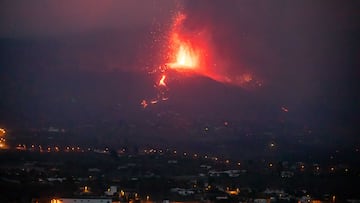Large magma reserve detected in La Palma
The discovery completely changes the way of dealing with eruptive processes in the Canary Islands, which can occur more quickly and explosively.

The Volcanological Institute of the Canary Islands (Involcan) has reported this Monday that a large reserve of magma has been detected under La Palma responsible for fueling last year’s eruption. The study , published in Nature, is the result of scientific collaboration between the University of Granada and the Trofimuk Institute of Petroleum Geology and Geophysics (Russian Royal Academy of Sciences), and has concluded because of the magma that exists beneath the island “it is not possible to discard this magmatic system could cause future new volcanic eruptions”, according to Involcan.
The research has also been able to verify the path followed by the magma to the surface, which explains the high seismicity that added a higher level of risk and distress to the population of the island. According to Involcan, the results are “an unprecedented milestone” because it has been possible to follow the entire eruptive process inside the Earth.
The results serve as a model for possible eruptions on other islands of the Canary archipelago, especially those that could occur in Tenerife, because it represents a change in the paradigm or pre-established model on the interior structure of the Canary Islands. The fact that there is a large reserve of magma under the Canary Islands means that eruptive scenarios can occur faster and more explosively than has been postulated up to now with classical models.
El @involcan detecta una gran reserva de magma bajo La Palma responsable de alimentar la erupción de Tajogaite de 2021https://t.co/RjEfHx9mMt. pic.twitter.com/Eyd43ntLuA
— IGEO (CSIC-UCM) (@IGeociencias) October 24, 2022
The study was carried out during the eruption
Related stories
To carry out the study, it was necessary to coordinate fieldwork, deploying and maintaining seismic stations to later analyze the seismic data and interpret the path followed by the magma from the depths to the surface, as explained by Involcan. The work was carried out at the same time as the eruption: the first 3D images of the interior of the Earth under La Palma were obtained two weeks after the eruptive process began, on September 19, 2021.
Before publishing them, the images of the study were presented and analyzed in the Canary Islands Volcanic Emergency Plan (Pevolca) committee, in order to make a forecast of the ongoing eruptive process and thus help or contribute to the management of the volcanic emergency. The research “represents the culmination of a multi-institutional and international relationship focused on understanding the dynamics of this eruption of such high social and scientific impact,” says the Institute .

